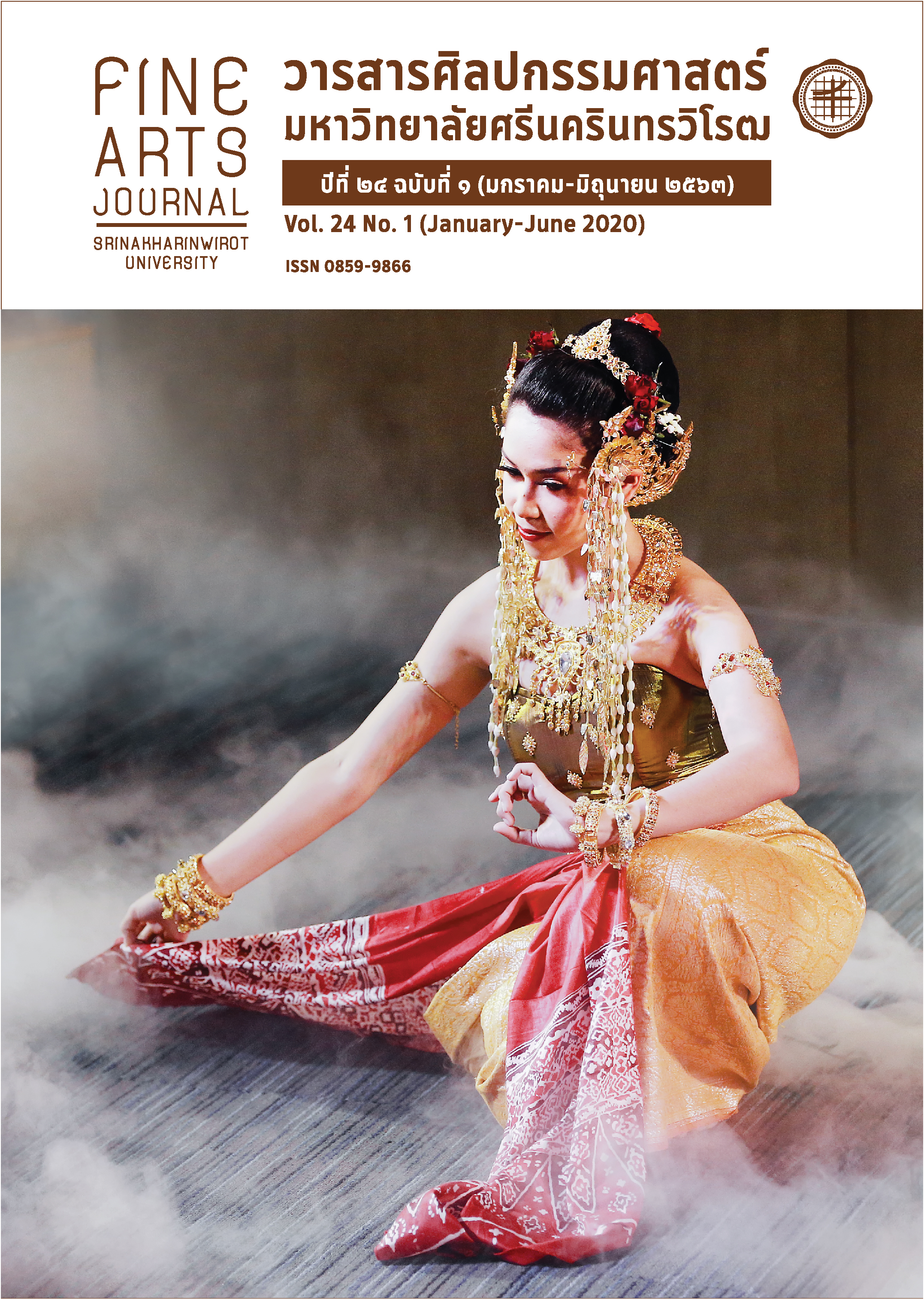THE CREATIVE ISAN FOLK DANCE: BUFFALO-FECES DYED CLOTH
Keywords:
Thai Isan folk dance, Dyed fabric, Buffalo dungAbstract
The current creative arts research entitled “The Creative Isan Folk Dance: Buffalo-feces Dyed Cloth” aims to investigate the origin and the method of how to make buffalo-feces dyed fabric as well as to initiate the performance, produce the music and melody, design costumes, and create dancing postures. The data was collected through the method of non-structured interview and participant observation. The collected data was then analyzed in accordance with the research objectives. The results of the study show that ‘The Isan Folk Dance: Buffalo-feces Dyed Cloth’ is a performance that shows the process of how to dye fabric with buffalos’ feces. The dancing movements are inspired from buffalos’ movements such as walking and excreting. Apart from the movements of buffalos, the dancing movements also imitate the fabric dying processes of the Na Chueak’s villagers. In the morning villagers would collect buffalo dung for fermenting and dipping colour. After being dyed, the fabric is dried to make the cotton for weaving. During this processes, male and female youths are able to join happy activities and tease each other. Additionally, the buffalo-feces dyed fabric has been promoted as one of OTOP products from Sakon Nakhon Province. The researcher team has adapted the movement from above to create a new dance movement in this performance following creative principles.
Downloads
References
รจนา สุนทรานนท์. (2551). วิธีสอนและเทคนิคการสอนนาฏศิลป์ไทย. ปทุมธานี: ศูนย์ปฏิบัติการมหาวิทยาลัยเทคโนโลยีราชมงคลธัญบุรี.
วรัทยา ด้วงปลี. (2556). อิทธิพลของฟ้อนแม่บทอีสาน. กรุงเทพมหานคร: สถาบันบัณฑิตพัฒนศิลป์ กระทรวงวัฒนธรรม.
สุดารัตน์ สกุลคู. (2556). บ้านนาเชือก. ม.ป.ท.
สุมิตร เทพวงษ์. (2541). นาฏศิลป์สำหรับครูประถมและมัธยม. กรุงเทพมหานคร: โอเดียนสโตร์.
อมรา กล่ำเจริญ. (2535). วิธีสอนนาฏศิลป์. กรุงเทพมหานคร: โอเดียนสโตร์.






